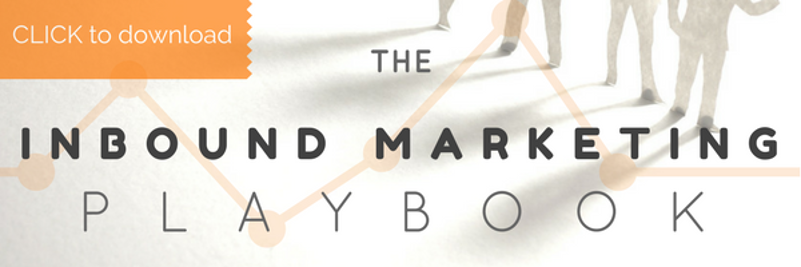Your company's sales people are addicted to cold-calling... and it's slowly killing the bottom line (and very likely their souls as well).
You may be asking yourself, "what does this have to do with me?" I've heard plenty of marketing leaders explain to me how disconnected they are from the sales teams, which never ceases to amaze me. You're both there to facilitate the sale, and, in a perfect world, where one ends, the other begins.
But there's likely a gap - a glaring, PAINFUL gap, creating opposition and blame between the two departments, all of which, are causing more harm than good. The gap between the two of you NEEDS to close - fast. As a marketing leader, you actually have the power to minimize and remove their dependency on cold calling.
Truly, it's their single biggest pain-point, so making a change like that would a LONG way toward total alignment.
Don't "Mind the Gap;" Fill it
Right now, your sales team's pain is rooted in the fact that when they call a prospect, their advances are unwelcome. They're calling prospects found in one of a few different ways:
- Purchased lists provided by management
- LinkedIn research
- D&B or Hoovers reports (or something more industry-specific like Bullhorn if you're in staffing)
Maybe they're going into the call with a little bit of research under their belts, but very little, and probably not. They have quotas to fill, and it's hard to hit 50 - 100 calls a day AND research each one.
What they usually have to do instead is cram every value proposition and differentiator your company offers into a 30 second pitch that applies to MOST of their prospects' situations. And when they inevitably get something wrong, they have to pivot without hesitation, and try to cram the next pitch in there until they hook and qualify somebody or get hung up on.
It would be a lot less painful if their prospect knew of them prior, and even better if permission was given to market to them.
And this is where an internal lead generation engine - one that is grown by your team or an inbound agency - will change the game.
The Lead Generation Mechanics
1. Functional website - first and foremost, your website needs to be more than a brochure. Brochures don't really sell anything to people who aren't already interested in buying, and the large majority of your website visitors won't be interested in buying on their first or second visits.
Being functional means that it attracts visitors, helps them find answers to their problems, educates them on their pain and the services or products you offer to relieve them of that pain, and converts them into leads and/or customers.
Not sure what kind of website you have?
Here's a simple litmus test - ask whether it produces customers on its own, or at least quality leads that eventually close into customers through your sales department. If not, ask yourself what the purpose of your website actually is. If your answer doesn't involve generating leads and sales, it's a brochure.
The big key here is GENERATING sales opportunities versus just being leveraged by the sales teams.
Want to learn more about building a website that works harder than anybody on your sales teams?
2. Blog - Before you pick up a Blogger account and start unleashing your stream of consciousness on the world, it's important to have a plan - one that involves a real end-game.
I talk to a lot of marketing leaders who understand that there is significant value in blogging, but many struggle connecting it to anything tangible. This is where an inbound marketing agency could really come in handy.
Typically, their blogging strategy is geared toward lead generation, and there are a lot of other parts that they can provide or help you develop (if you already have execution resources and just need strategy leadership).
This is really going to help your sales people, because they can leverage your articles in their sales process. It's also the beginning stages of inbound lead generation. With the right articles, you can help people diagnose their challenges before your sales people exchange a single word with them.
Important notes:
- Blogs shouldn't be promotional by nature
- They really ought to help readers solve problems
- They should have portals to lead conversion mechanisms (what's this?)
3. Active social presence - This is another area where I run into a lot of frustration. Social media, on its own, or operating in a silo, is a grind. But your sales teams are out there, and they're doing their best to keep up appearances for your company, so if you could give them a helping hand by providing quality content on the business pages, then you'd be doing them quite the solid.
But it can't be self-promotional all the time.
4. Gated collateral - This is where inbound gets really interesting. By offering your readers access to interesting, related (to the blog posts where they're promoted) content offers, you provide custom paths that people can take to further engage with your services.
Like blogging, it's important to have an end-goal here as well. And, for that, I think it's important to understand the different phases of the buyer's journey (read more on that here). As a refresher, here they are:
- PHASE 1 - Awareness
- PHASE 2 - Consideration
- PHASE 3 - Decision
If somebody is reading an awareness-level blog post, your content offer should be awareness stage as well, and you should have links and clear CTAs (calls-to-action - or buttons)
The more common mistakes I come across include:
- Going straight for the kill with assessment CTAs on awareness blogs (people need to discover more before your consultation)
- Putting NO paths out there under the assumption that your readers will find the "contact us" page on their own (90+% of your potential customers visiting aren't ready to buy when they come across your site - they need to discover, and you need to help them do that)
- Offering content that isn't difficult to find on their own
Here's an example of a content offer chain we created along with a deviation based on persona (Learn how to build better buyer personas):

- Getting Started with Inbound Marketing (awareness)
- Inbound Marketing Playbook (awareness)
- (Persona Deviations - consideration)
- What Inbound Leads Look Like (sales leaders)
- Marketing organizer template (marketing leaders)
- Marketing Objectives Calculator (business owners)
- Case Study (decision-making)
We start by promoting "Getting Started with Inbound Marketing" in blog posts where we are introducing high-level inbound philosophy, kind of like what we're doing here today. The offer itself is full of facts and great content describing why inbound works.
This is a very Awareness Phase offer.
Within the guide, we promote the Inbound Marketing Playbook, which gives you the tools to actually execute inbound without having to hire an agency. The purpose of this is to help you compare apples to apples with other marketing methodologies you're considering.
We also tend to promote this playbook later in the same blog articles we promote the guide to getting started, because some people prefer to download everything, then finish the blog before going back and reviewing the downloaded content. We also consider this to be awareness, although definitely farther along in the buyer's journey.
Then, since people are in that comparing apples to apples mindset, we promote consideration-stage content. Here, we have different offers for different personas, because marketing leaders, sales leaders, and business owners (our top 3 personas) all have different wants and needs and pain-points.
Sales people tend to gravitate toward understanding how it impacts them directly, so seeing What Inbound Leads Look Like is usually pretty appealing. Marketing leaders like to see what pieces they may have that can fit into inbound at this stage, and what they need to make it truly inbound, so the planner template does well. Owners tend to focus more on bottom-line impact, so the marketing objectives calculator seems to fit their fancy.
The big keys to success:
- Make sure there are forms standing between visitors and the offer
- The offer must not be 100% self-promotion
- Make sure it provides tangible value, or they won't be back
How to pull it off
The way I see it, you have three options:
- Hire an inbound team
- Run the inbound team yourself, and hire contractors
- Hire an inbound marketing agency
To give you an idea of what the team should look like, here are the roles I assign to typical inbound projects along with their duties:
- Project Lead - Manage project strategy, analytics, and reporting, and delegate duties, edit projects, and ensure that resources are applied to where they are needed most. In the agency, this role is also client-facing, and the main contributor to sales & marketing cross-collaboration projects.
- Content Creator - Write blog articles, website content, and anything else that requires copy, including social media posts.
- Graphics Designer - Provide graphics for blog posts, web pages, and content offers.
- Web Designer - Develop strategy in collaboration with Project Lead through research, data analysis, and surveys.
- Web Developer - Develop the actual website based on designer specifications.
- Sales Enablement - Develop processes for inbound lead nurturing and hand-off as well as provide sales coaching and strategy guidance. In addition, this individual hosts our sales/marketing cross collaboration calls where we share ideas, challenges, and successes.
- SEO Specialist - Although many of the planning duties fall on the Project Lead, the SEO Specialist is critical for ensuring the creative side merges with the technical requirements of all of the search engines.
CONCLUSION:
By installing an engine that actually feeds your sales teams qualified leads, you will help them end their dependency on cold-calling. And let's face it, cold calling is the worst. Not only is it painful for your sales teams, your customers aren't fans either, and it doesn't work nearly as well as it once did.
Click HERE for the inbound lead generation playbook:



